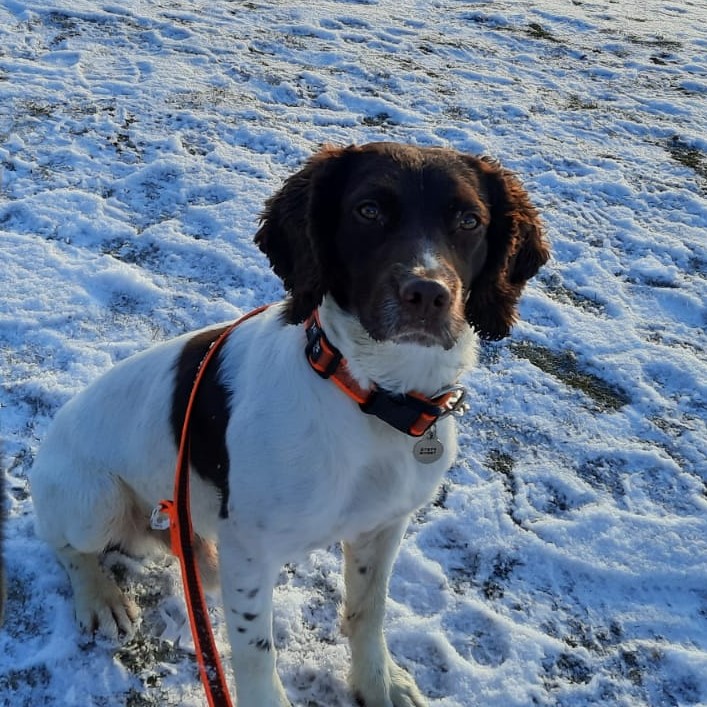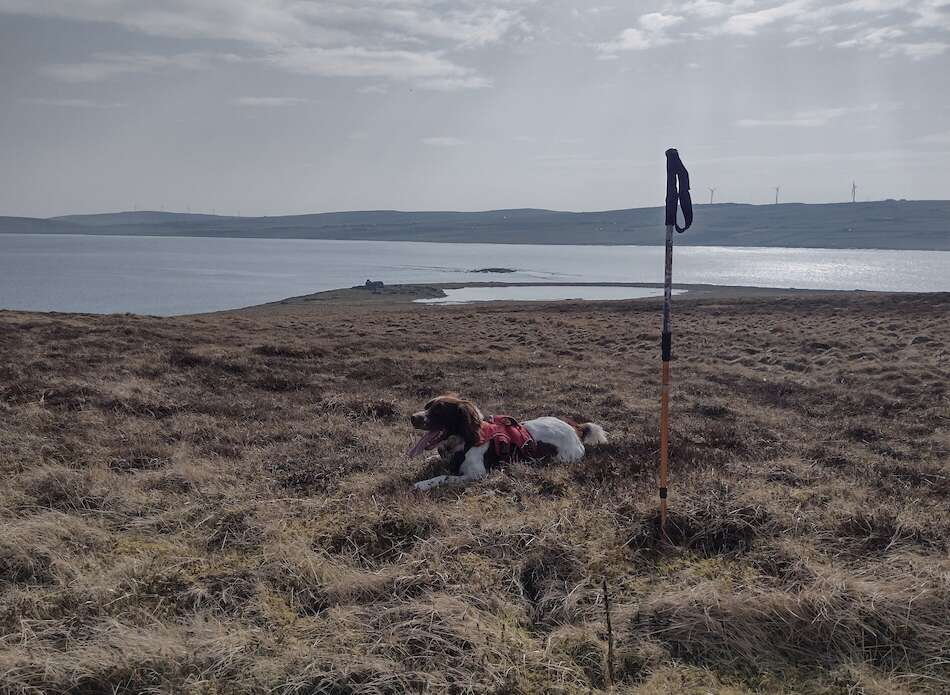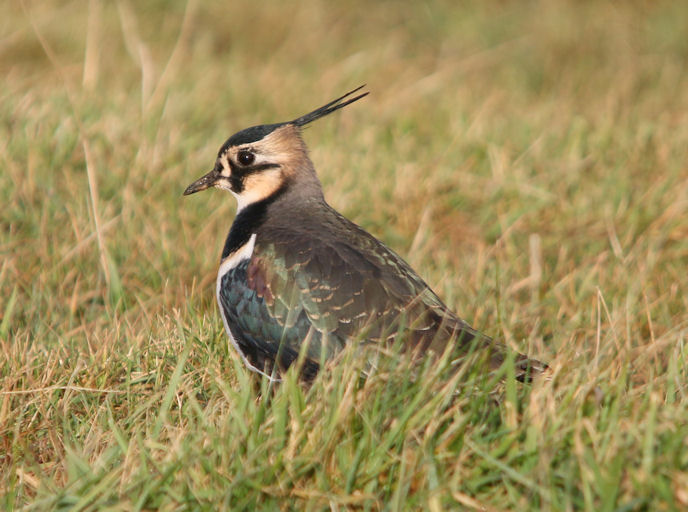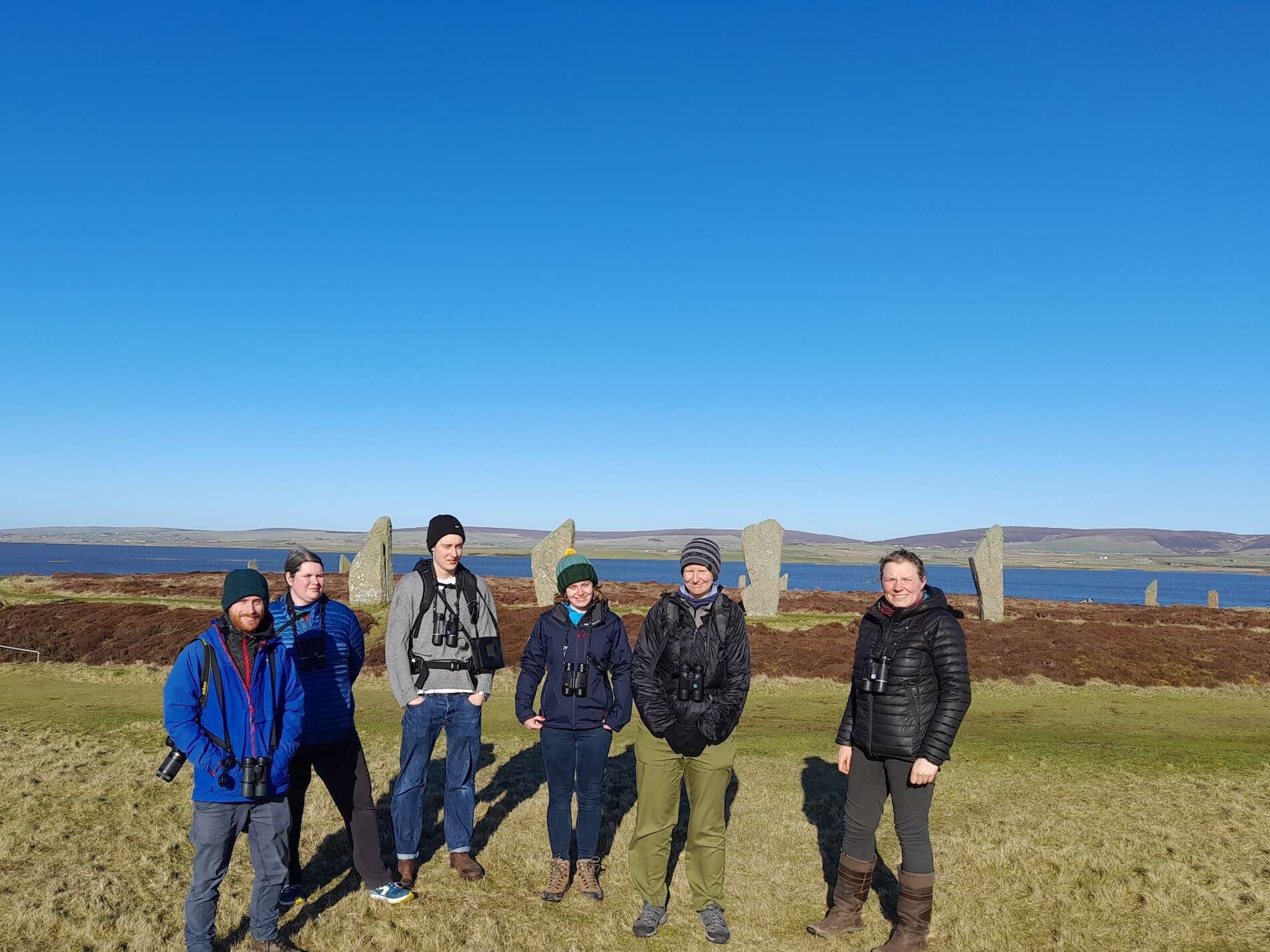Our latest recruit to the biosecurity team!

Riggs is the latest stoat detection dog on the ONWP team. He has successfully finished his local training, and quickly became adept at finding the scat of live stoats here in Orkney. He has already been out and about with his canine colleagues on Rousay last month. The team have been sweeping this high-risk island for any possible signs of stoats. Rousay can easily be reached by a swimming stoat, which have been known to swim up to three kilometres. The dog handlers and their canine colleagues have been concentrating on Rousay as part of a regular schedule of checks on high-risk islands.
The biosecurity team also took advantage of the recent fine weather before the shift to snow showers to check Eynhallow with dog searches for the first time and all our three dog handling teams covered the island in an afternoon. The good news is no stoats were found and so Eynhallow is another island we can be confident is stoat-free. The island is within swimming distance of the stoat population on mainland and a potential stepping-stone to Rousay, so our biosecurity checks are carried out carefully and regularly.
The team had a fantastic day saying: “Eynhallow is one of the few islands in Orkney with no invasive non-native species at all, and it’s incredibly important that we keep it that way. It’s just such a privilege to be able to visit such a special and spiritual island, and to know that we are helping to protect its amazing wildlife.”

Eynhallow is such a special case in our biosecurity network due to its inaccessibility as well as its status as a Site of Special Scientific Interest (SSSI). This is a formal conservation designation which usually describes an area that's of particular interest to science due to the rare species of fauna or flora it contains - or even important geological or physiological features that may lie in its boundaries. Eynhallow is special as one of the two most important sites for common seals in Orkney as they choose the island to both breed and to haul out. The island supports a locally important community of moorland birds and seabirds, including fulmar, Arctic skua, bonxies (great skua), puffin and black guillemot. There is also an Arctic tern colony. The rare hart’s tongue fern forms a colony on a rocky outcrop in the ravine that cuts across the island.
We observe the SSSI restrictions in place, so the team don’t visit at all in June or July to not disturb the breeding seals, which have numbered as much as 900 at any one time. Nor do we visit with dogs between April and August to avoid disturbing breeding birds. Eynhallow is incredibly important as there are no rats or mice on the island, so it is totally free of invasive species, allowing the native wildlife to flourish there unhindered by non-native predators.
Find out more about how the dog team fits into island biosecurity here and do say hello if you see them!
Welcoming our seasonal staff for 2022 monitoring
March is a very busy time for both our native wildlife and the Orkney Native Wildlife Project’s team. Alongside the lapwing displaying and the curlew bubbling we have welcomed some additional members of the team onto the project on short seasonal contracts, starting with our Senior research assistant, Ash.

Ash will be coordinating our research assistant team and ensuring that we are collecting all the valuable data we need to monitor local wildlife. “I feel incredibly lucky to have the chance to come and work on this ground-breaking project. Orkney is blessed with some of the best wildlife in the UK. When you see the birds in the field and watch as they navigate the many challenges of raising their young, you really come to appreciate how important the work of the Orkney Native Wildlife Project is,” she said.
Our three research assistants Ellie, Matt, and Sophie will be working across the isles, monitoring many species at over 80 survey sites, and including species such as oystercatcher, Orkney vole, guillemots and hen harriers.
Ellie is a returning member of the team and surveyed with us last year: “It’s great to be back for another season in Orkney! We’ve spent the last two weeks getting to know the sites, the team, and getting up to speed with the different monitoring surveys that we will be doing this season.” Both Matt and Sophie come with plenty of experience surveying species all round the world and we are very excited to have them both here. Although she has not visited Orkney before Sophie said: “As my friends and family will attest, having heard me talk about it for years, Orkney is somewhere I have long wanted to visit. While sounding incredibly cliché it is true to say I feel incredibly privileged to have the opportunity to work on such an exciting project and to spend my days hanging out with waders!” Matt also can’t wait to get out into the field. “To be able to contribute to the work of this project, helping to protect some of Orkneys iconic wildlife, is something I can’t wait to get stuck into,” he said. The monitoring team will also be helping with training and supporting our dedicated local volunteers returning for another season helping us.
Joining our research assistants this year we also have two residential volunteers, Arthur, and Kirsty, who will be with us for the next six months donating their time and energy working across the project. Their day-to-day duties will include everything from supporting the trapping effort to monitoring our native species and they are going to be key members of the team in the coming months. We are very excited as this is the first time that we have been able to offer residential volunteering as part of the project. Kirsty and Arthur will also be using this opportunity to develop their skills and further their conservation careers. “We are really excited to be able to give this valuable opportunity to anyone who want to extend their experience to further their careers in conservation, or even to anyone who want to try something new or give back to the community!” said Lianne Sinclair, ONWP project implementation manager.

If you do see any of our research team out and about do say hello, they might even be able to share some amazing sights with you…
Until our next issue, you can keep up with our progress via our Facebook page and our monthly column in the Orcadian newspaper. We welcome your feedback so if you have any questions at all please feel free to contact us.

